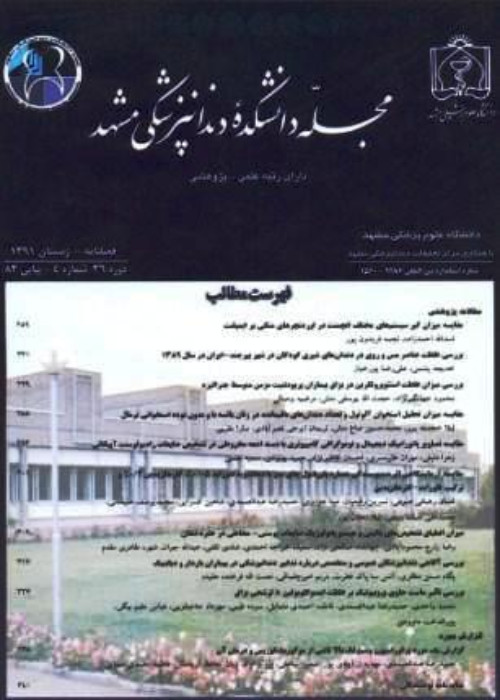Effect of Screw Access Channel Filling Method and Cement Type on Marginal Adaptation of Implant-Supported Fixed Restorations
Author(s):
Article Type:
Research/Original Article (دارای رتبه معتبر)
Abstract:
Introduction
One of the important factors in the success of implant-supported prostheses is the marginal fit of abutment-restorations. The aim of this study was to evaluate the effect of screw access channel filling method and cement type on the marginal adaptation of implant-supported fixed restorations.
Introduction
One of the important factors in the success of implant-supported prostheses is the marginal fit of abutment-restorations. The aim of this study was to evaluate the effect of screw access channel filling method and cement type on the marginal adaptation of implant-supported fixed restorations.
Materials and Methods
In this experimental in vitro study, 40 implant analogs were mounted in autopolymerizing acrylic resin blocks using a dental surveyor. Forty two piece titanium abutments were placed in each implant analog and torque up to 35 N cm. The following acrylic blocks of implants were randomly divided into 2 groups, including 20 abutment samples fully filled by the silicone, and 20 abutments sample filled partially with silicon. The marginal discrepancy of samples was measured from 4 sides with a magnification of ×50 by stereomicroscope before final cementation. In each study group, 10 samples were cemented by zinc-oxide eugenol temporary cement and 10 other samples with zinc-oxide non-eugenol temporary cement. The marginal discrepancy was measured at the same points again. Data were analyzed with ANOVA and, t-test (α=0.05).
Results
In all surfaces there were no significant differences in the mean marginal discrepancy between the group in which screw access channels were partially filled and the group in which screw access channels were completely filled before (P˃0.05)and after (P=0.052) cementation. However after cementation significant differences were found between the means of marginal discrepancy in two cement types (P=0.02). Non-eugenol cement showed significantly higher marginal discrepancy than eugenol cement (P=0.03).
Conclusion
The mean marginal discrepancy in both full and partial access cavity filling groups did not differ significantly, but a marginal discrepancy with the use of non-eugenol cement was greater than eugenol cementKeywords:
Language:
Persian
Published:
Journal of Mashhad Dental School, Volume:43 Issue: 1, 2019
Pages:
75 to 82
magiran.com/p1944293
دانلود و مطالعه متن این مقاله با یکی از روشهای زیر امکان پذیر است:
اشتراک شخصی
با عضویت و پرداخت آنلاین حق اشتراک یکساله به مبلغ 1,390,000ريال میتوانید 70 عنوان مطلب دانلود کنید!
اشتراک سازمانی
به کتابخانه دانشگاه یا محل کار خود پیشنهاد کنید تا اشتراک سازمانی این پایگاه را برای دسترسی نامحدود همه کاربران به متن مطالب تهیه نمایند!
توجه!
- حق عضویت دریافتی صرف حمایت از نشریات عضو و نگهداری، تکمیل و توسعه مگیران میشود.
- پرداخت حق اشتراک و دانلود مقالات اجازه بازنشر آن در سایر رسانههای چاپی و دیجیتال را به کاربر نمیدهد.
In order to view content subscription is required
Personal subscription
Subscribe magiran.com for 70 € euros via PayPal and download 70 articles during a year.
Organization subscription
Please contact us to subscribe your university or library for unlimited access!


